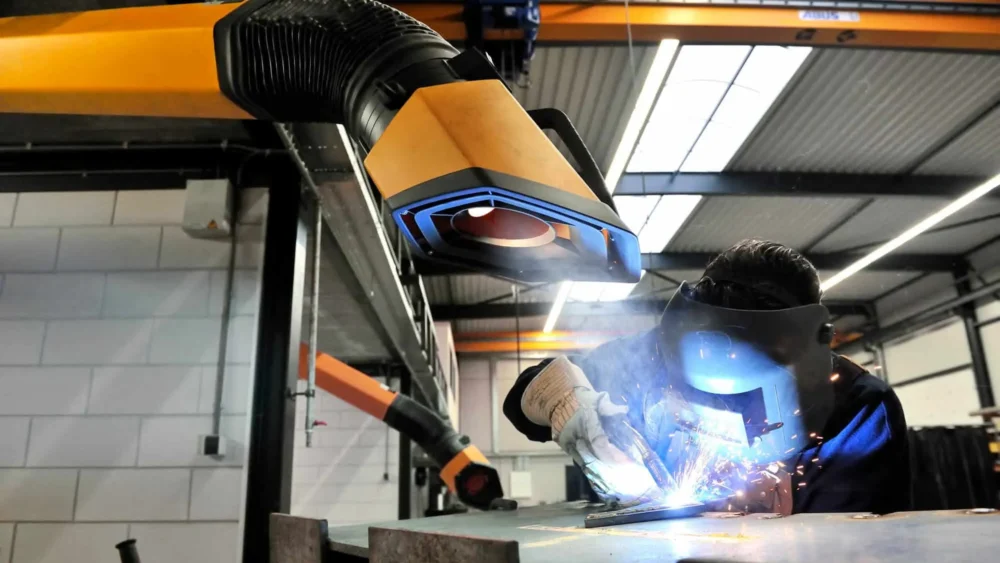Factors determine the risks
Scientific studies report that the effect of welding fume can cause all kinds of physical complaints and serious diseases such as cancer, asthma, and Parkinson’s disease. Welding fume and the composition of smoke vapor created when welding different types of metal create dangerous airborne particles that are threatening to life longevity when breathed in. Ensuring proper ventilation and air filtration equipment in the welding workspace by using fume extraction equipment to capture the fume is important.
Particles constitute the greatest health hazard
Welding fume is a varying mixture of airborne gases and fine particles. The composition of the mixture depends on the welding method and the product welded. Gases that may be released include:
- nitrous oxide (NO)
- carbon dioxide (CO2)
- carbon monoxide (CO)
- shielding gas
- ozone (O3)
Also, weld fume may contain fine particles of metallic oxides, fluorides, and metals such as:
- chromium
- nickel
- zinc
- manganese
- cobalt
- lead
- copper
Technical information about “dust-fall” and lighter particles
Welding fume particles are less than 1 μm, that is, 0.001 mm in diameter, when produced. But increase in size when particles stick together. Particles in the size range 1-7 μm thus develop with time. The 1-7 μm diameter particles constitute the greatest health hazard because of their ability to penetrate deep into the lungs and because they are not readily cleared by the cilia lining the respiratory tract. The particles visible in the fume plume are usually heavier, that is, larger, particles that will rapidly precipitate onto adjacent surfaces as ‘dust fall’. Particles in the welder’s breathing zone are usually 2 μm or less. These lighter, smaller, particles may remain in the air for some hours if not removed by extraction or ventilation.
The faster fumes are removed by ventilation, the better
The concentration of welding fume and the harmful substances are the highest in the plume of fume that rises from the welding point. Weld fume captured at the source benefits indoor air quality. How long a welder may be inhaling such a fume depends on the time he is welding. Some fabricators weld one or two hours a day, others weld all day long. A simple calculus, also called the arcing time, shows the longer one welds, the more fume is being produced and the greater the danger of inhaling the mixture of airborne gases and fine particles.
The level of the risk without proper ventilation and protective measures are taken, depends on three factors: the toxicity of the fume, the concentration of the fume, and for how long the fume has been inhaled. The toxicity of the fume varies. As stated, it depends on the type of welding process, the welding materials used, and what kind of material is being welded. In future blogs, we will write more about fumes from, for instance, mild steel welding, stainless steel welding, or welding of metals that are coated, and about the fume development in specific welding products and processes.




Comments are closed.